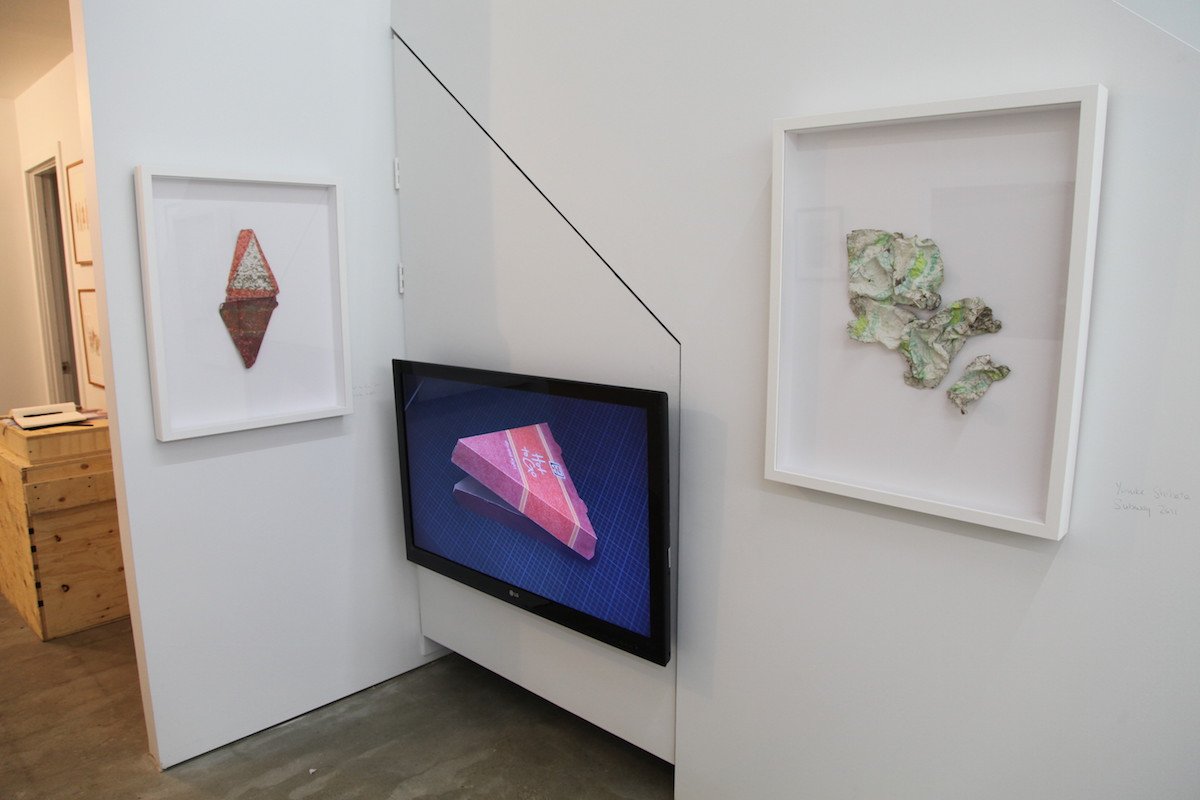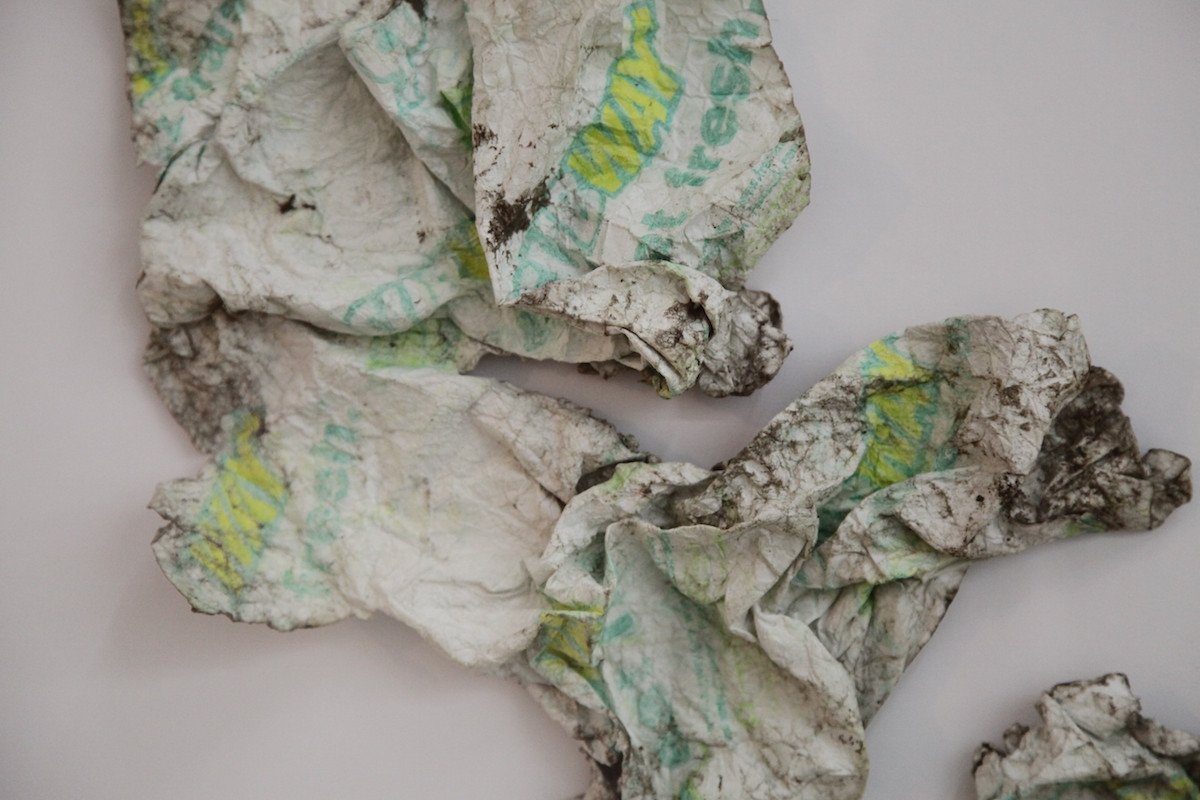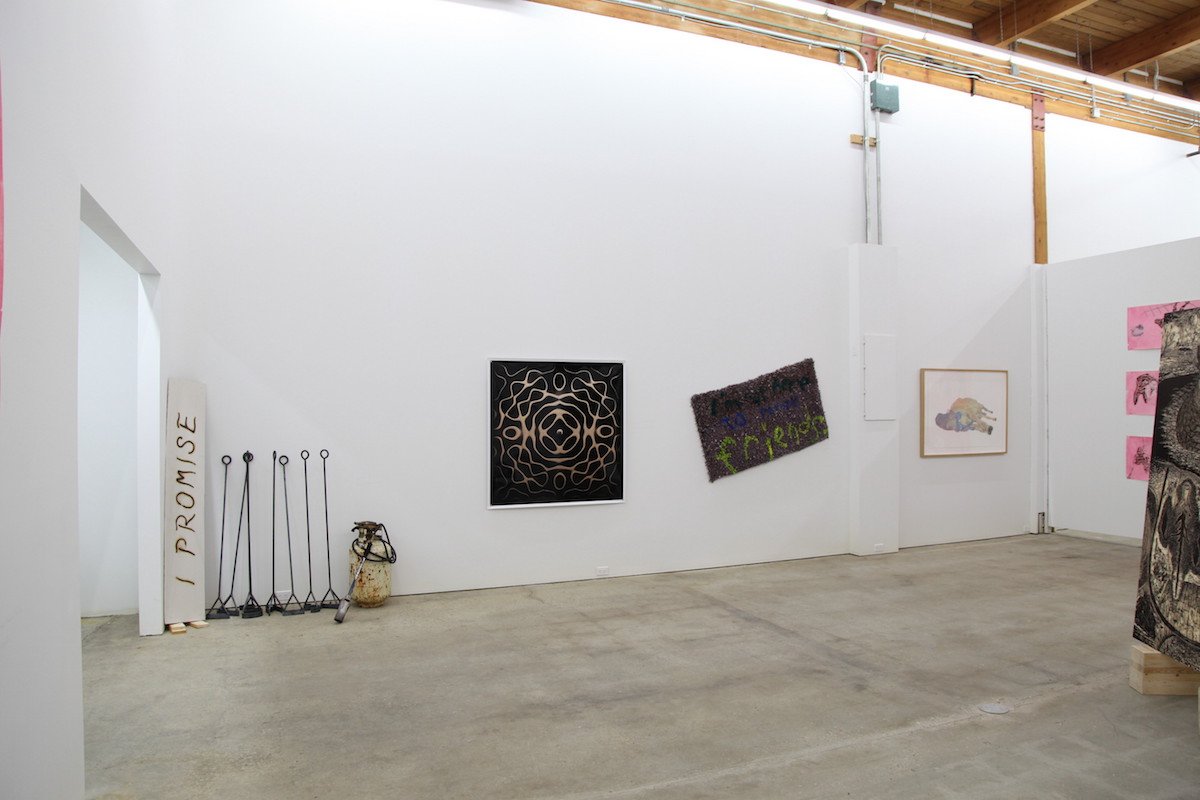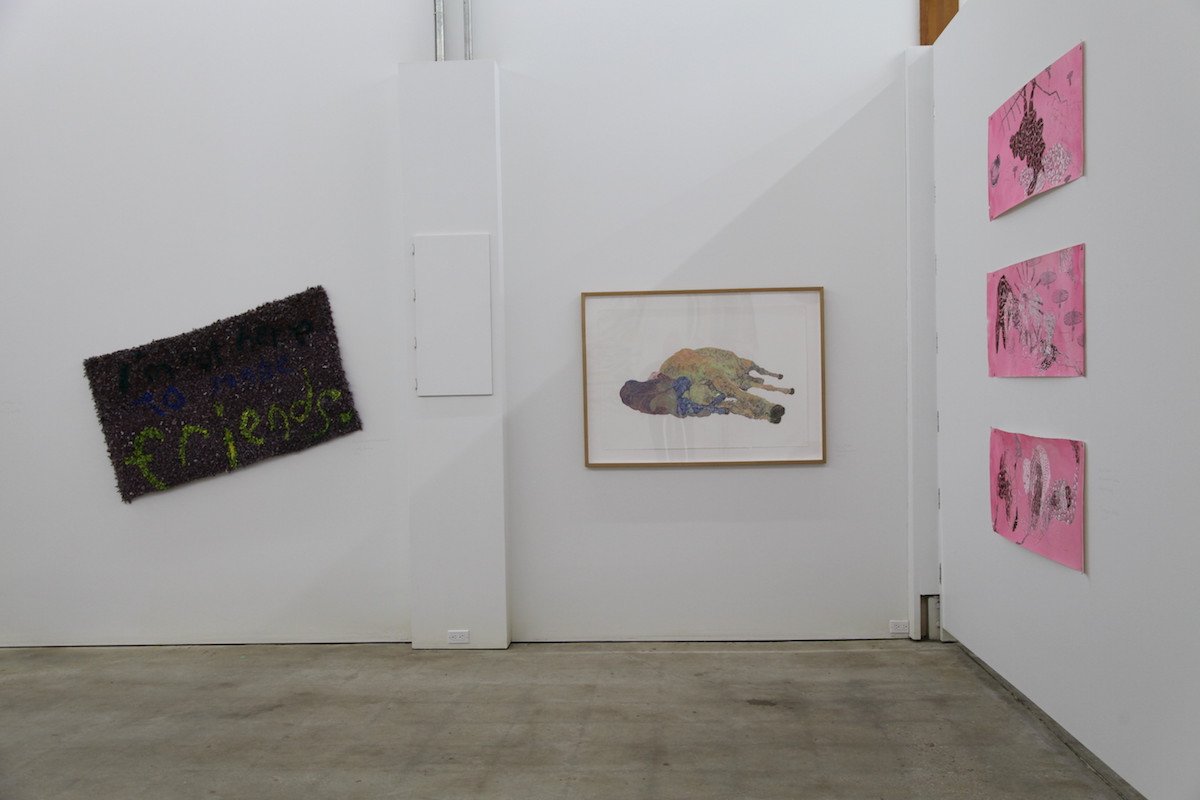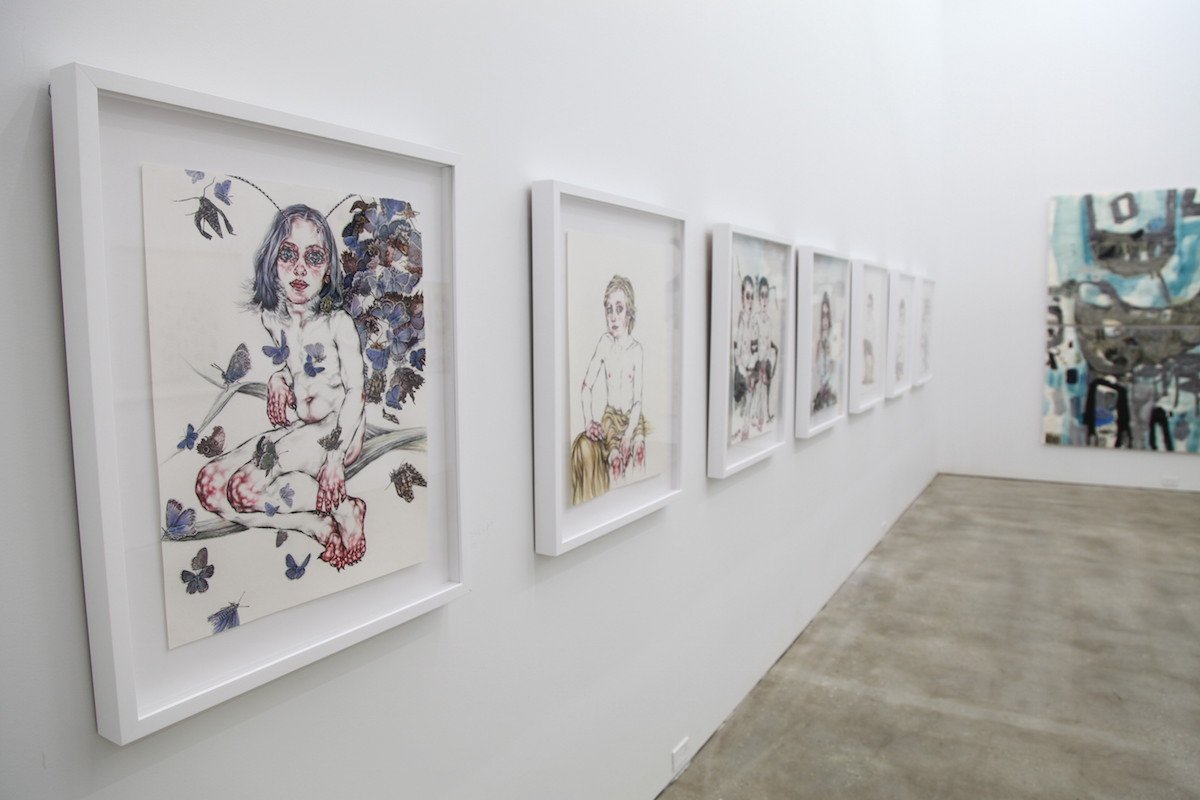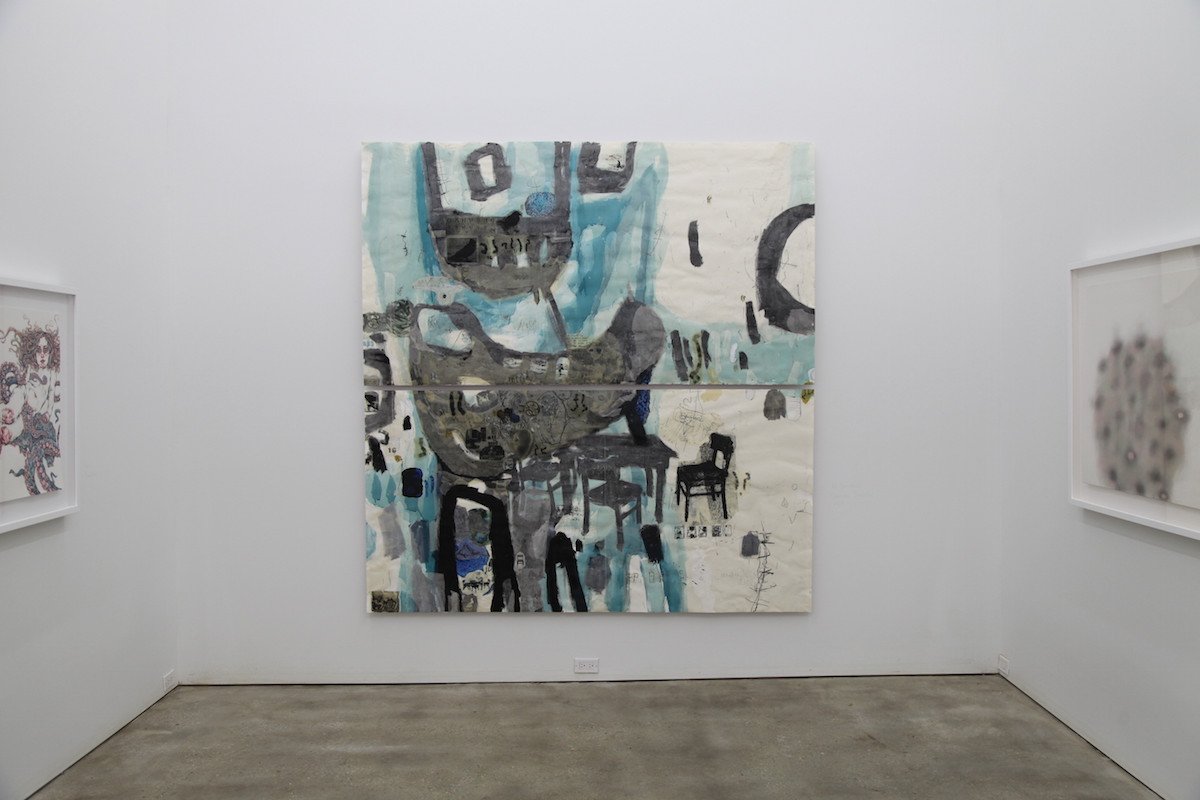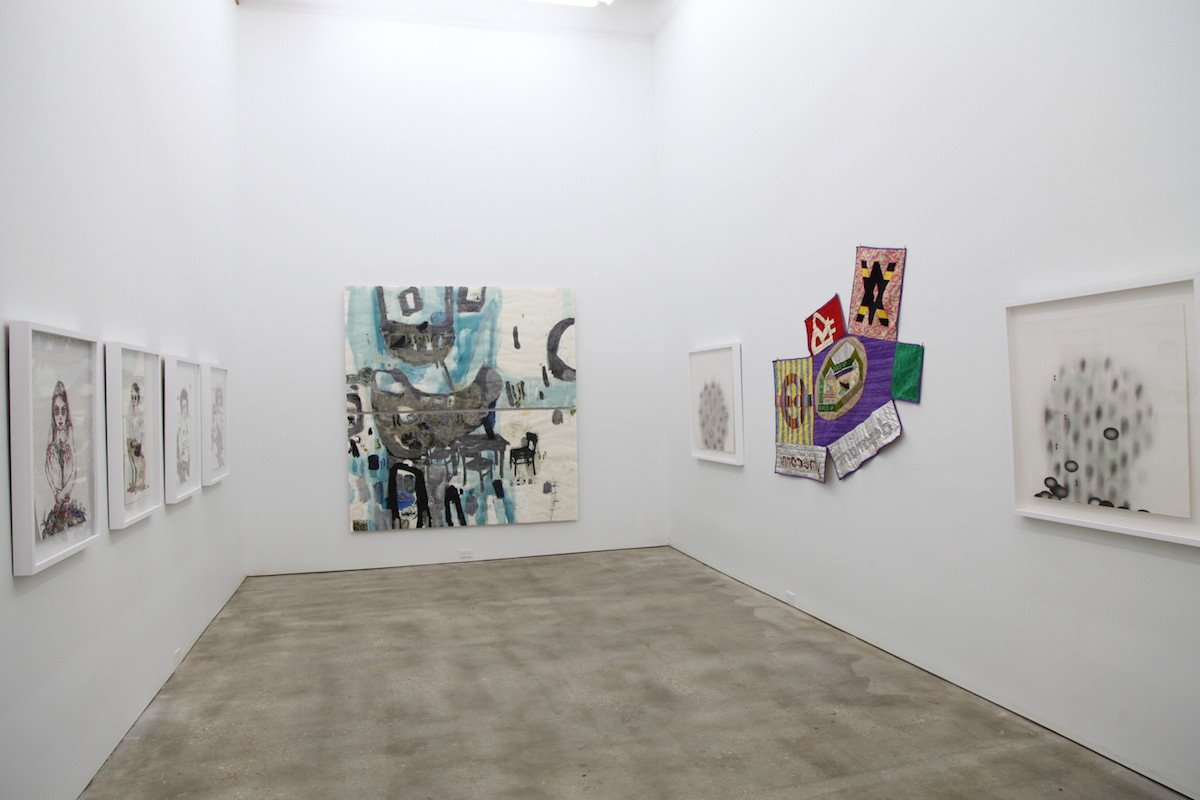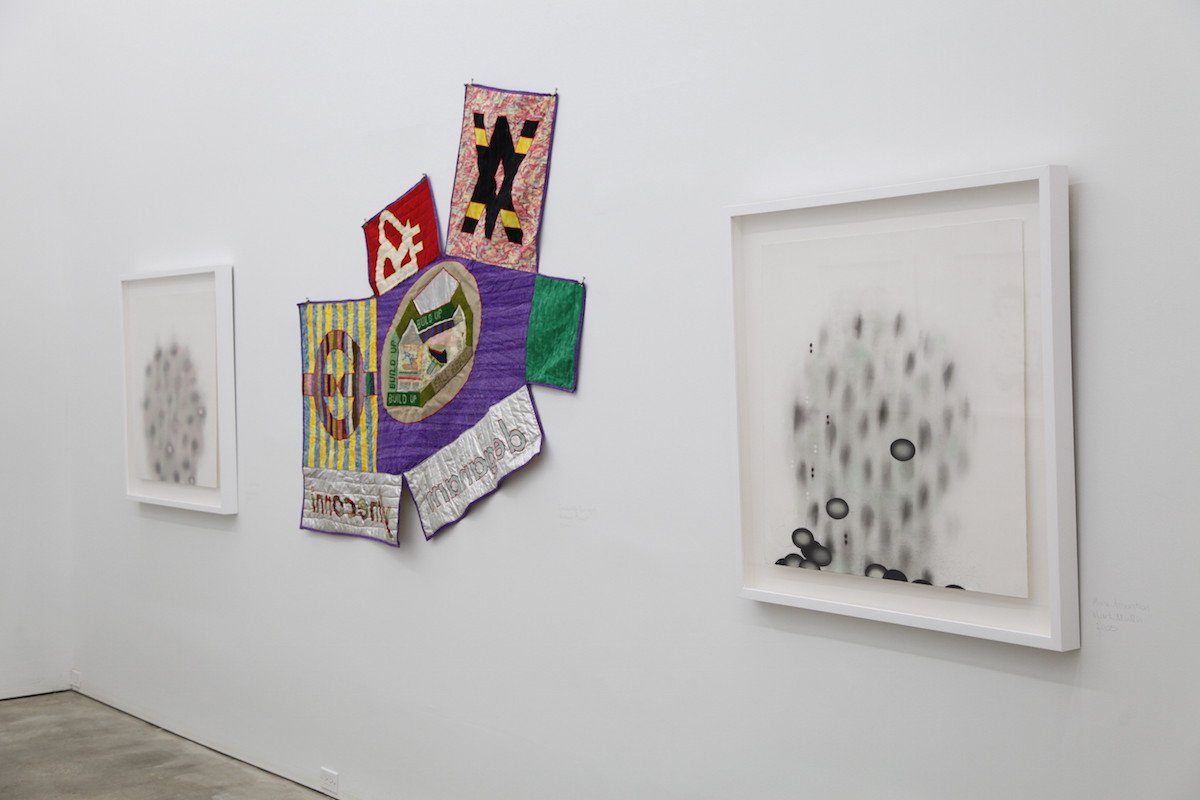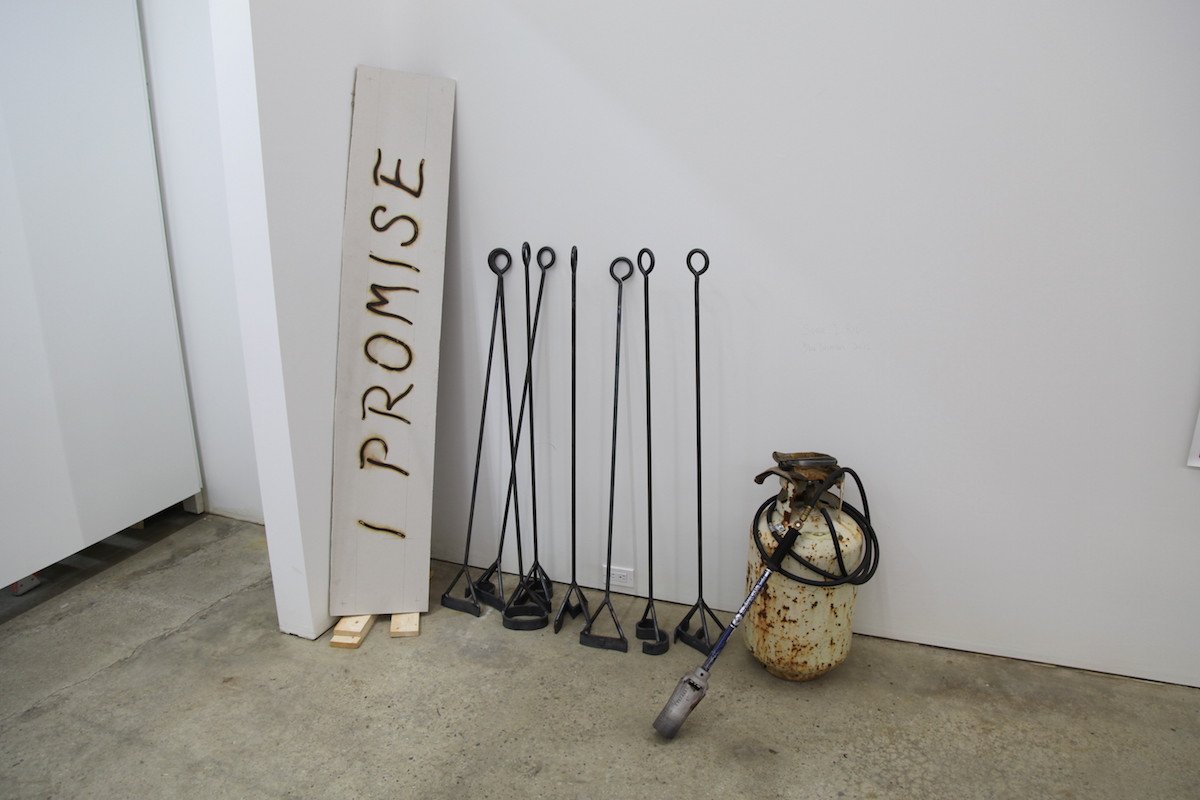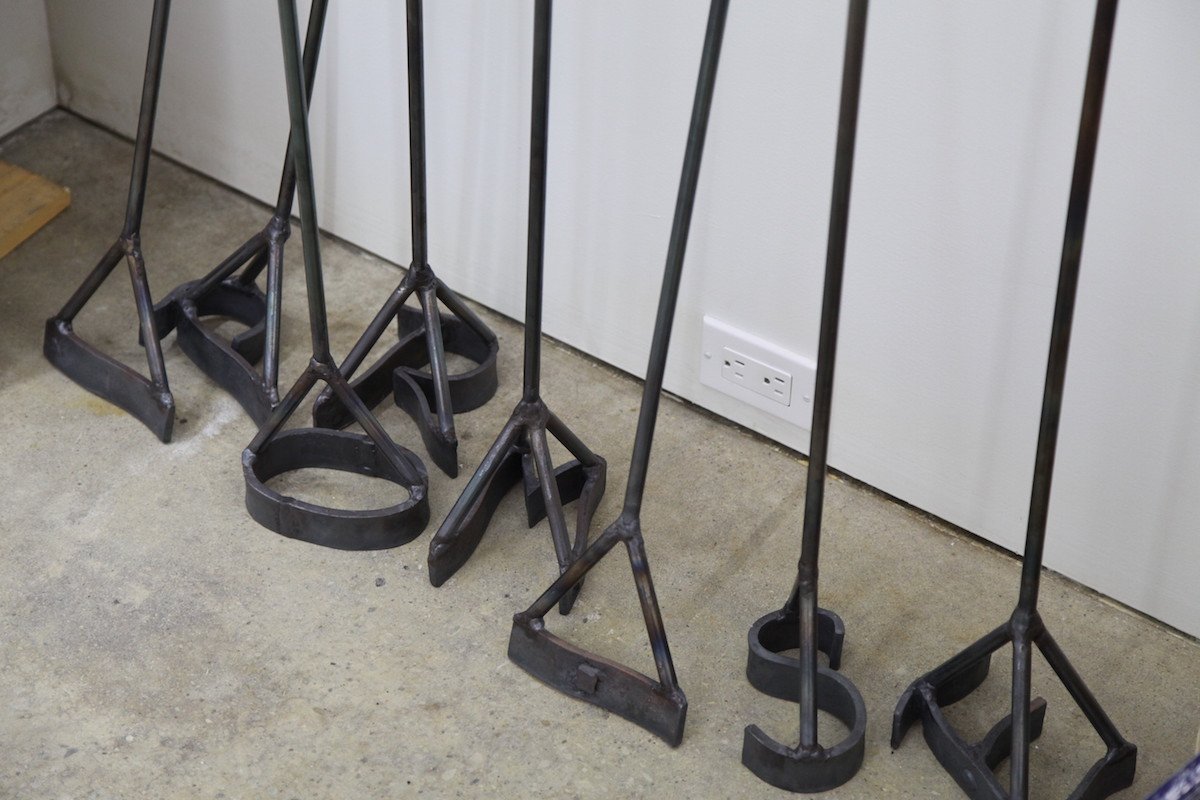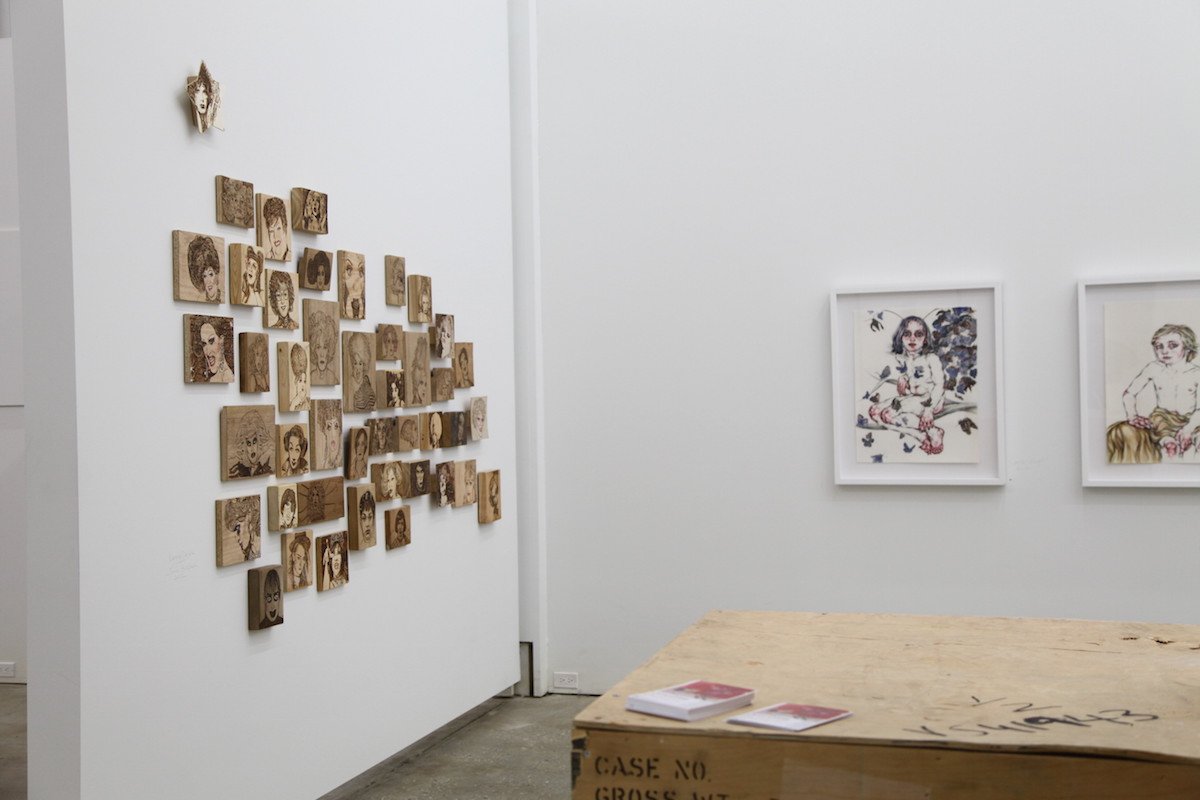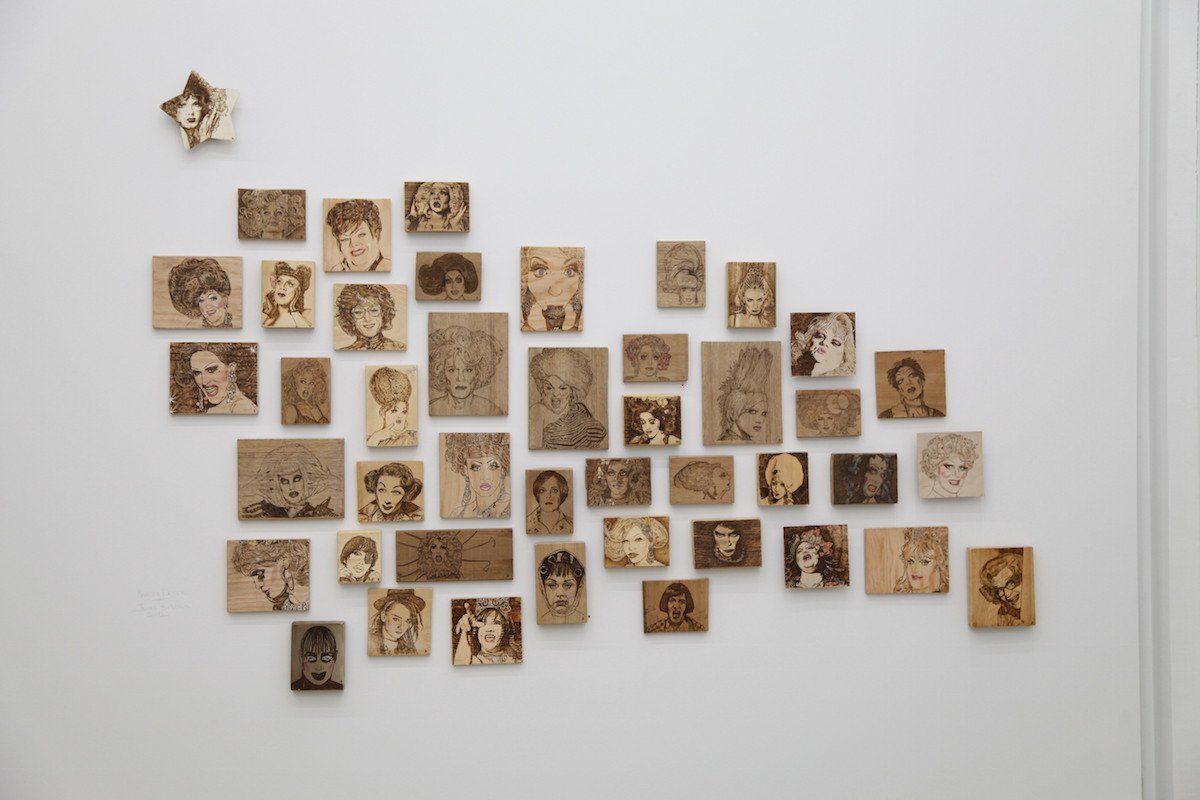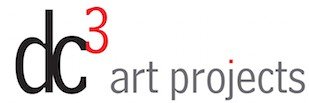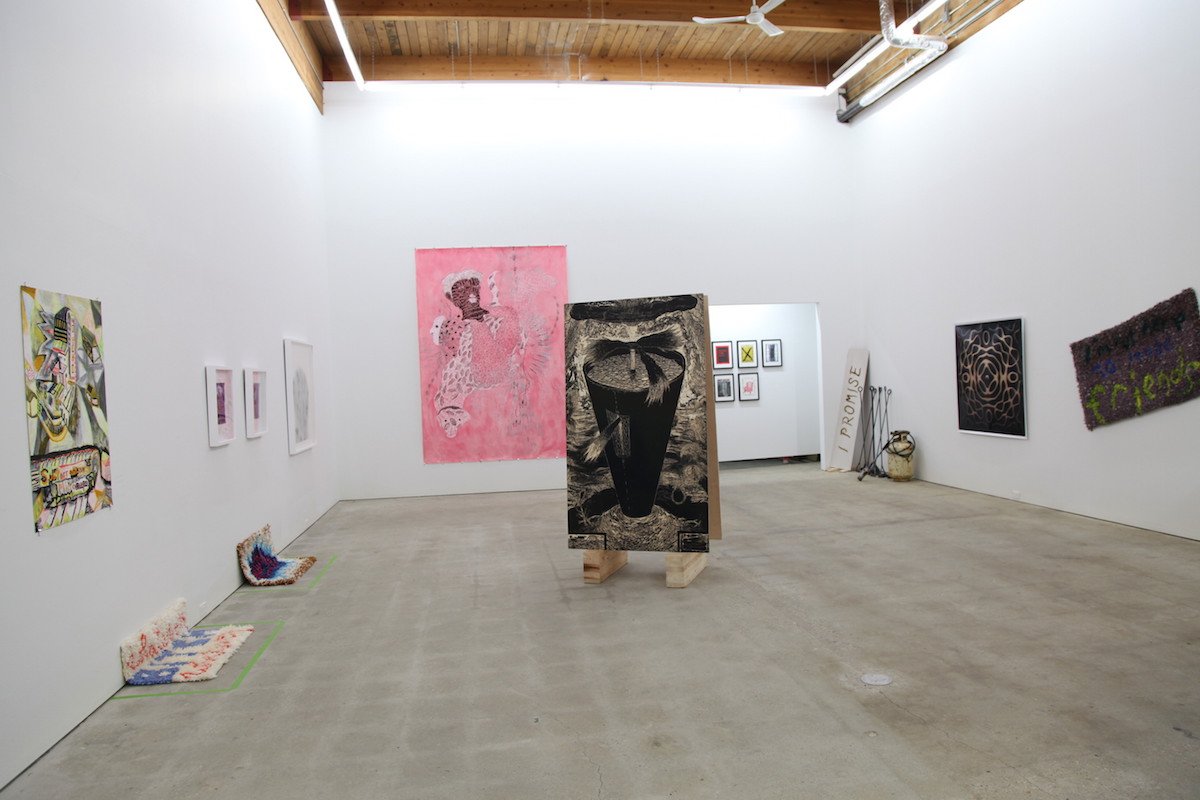
Just Draw
October 4 – November 15, 2012Featuring: Cindy Baker, James Birkbeck, Richard Boulet, Blair Brennan, Sean Caulfield, Paul Freeman,
Adam Fuss, Dana Holst, Gary James Joynes, Travis McEwen, François Morelli, Mark Mullin,
Tammy Salzl, Daniela Schlüter, and Yusuke Shibata
They threw a pencil/pen/crayon at you and told you to occupy yourself. “Just draw” they said. They got mad when you marked the walls or table or when the crayons melted into the rug but still reveled in the masterpiece you had created, giving time to finish dinner/cleaning/the game. Just draw something.
Drawing is a universal first step in visual communication. It predates language (in written form) societally and universally, and is the groundwork of much of human endeavour. Written language evolved from the practice and is simply a specialized form of line and shape. Even in our digital age, the iPad has become another tool for the most basic of artistic creation – a 21st century Etch-a-sketch.
Just Draw is an examination of how drawing is used in contemporary creative practices. Mark-making can occur in many media and all levels of complexity but very often has its origins in drawing – for film, video, sculpture, installation, painting, craft, architecture. In graphic novels, video games, zines photography and performance arts drawing allows additional venues for communication. Within Just Draw I have hung a wall in salon style with works from my collection and some brought in for the exhibition. I love drawing and have collected and shown these pieces in a similar manner in my own home. They are a tumult of images and line that tell me different stories and deliver new delights daily. Drawings connect me to the artists’ hands in a way unique to the medium – they are informal and intimate and fill my heart. Just Draw.
Artists
Line is integral in all of Blair Brennan’s work. From the branding of hides and walls to the simple registering of X and O in recent sculptural work, Brennan uses various tools in the capture of simple line and form most often through text. His daily (or near to daily) drawings can be simple text via anachronistic technology to complex shaded and rendered caricatures of life. Mechanically done or handmade, drawing is central to Brennan’s practice in all dimensions.
Gary James Joynes and Adam Fuss use the most basic of natural phenomenon to draw highly nuanced and beautiful images on CCD chips and photo paper. Simply using light, object and paper, Fuss renders colour and it’s absence in his photograms derived from the earliest experiments with Xray and photographic technology. Joynes uses the physical properties of sound to sculpt matter in a form of performance drawing that results in sensual and delicate images reminiscent of ancient sacred forms the world over. Neither artist uses traditional drawing tools or tecniques yet their creations speak clearly about the simplicity of creating form out of line.
More traditional drawing techniques occupy Paul Freeman in his examination of the human form through medical imaging and of man-made changes in evolutionary development. Vivid and often lurid pastel colouration brings the strangeness inherent in the natural world and our new ways of influencing/examining it to the paper surface. New technologies also allow these three dimensional pieces to come to life in sculptural forms soon to be premiered at the Art Gallery of Alberta.
Tammy Salzl, similarly, finds influence in the changing natural world and our increasing disconnect from it. As we distance ourselves from our most basic animal-ness and alter the world around us forever, what impact do we have on the physical, psychological and biologic future of coming generations. Drawing and collage allow her hybrid creatures to tell their tales and converse with her monumental oil on canvas paintings of times to come, perhaps.
Montreal’s François Morelli is a polymath senior artist with an MFA from Rutgers University in New York. He has an extensive showing history of sculpture, performance, video and most recently massive drawings. During formative periods, while teaching, commuting long hours and building a family he used ink, watercolour and paper to express and process. Never shown publicly, these works from the mid 80’s to early 2000’s are delicate and beautiful drawings with deep connections to past and future work. Repeated use of armature–like forms echoes his performative sculptures and rubber stamped print works, his later work on the Belt Head series of performative drawing and print and the mammoth pink drawings done during a 6 month residency in New York City in 2011.
Tokyo based Yusuke Shibata’s multi-media work, recently installed at Latitude 53 Visual Culture uses documentation of obsessive drawing to spotlight our consume and throw away culture and the ways that we ignore the beauty and dross of the world around us. Using photography and video to document his creative and destructive efforts allows us to see treasure in the streets and accord it value as such.
James Birkbeck, an Edmonton artist working in multiple creative arenas, repurposes public images of marginalized groups through a most basic and acceptably masculine drawing medium. His portrait woodburnings, exquisitely detailed renderings of gender challenging performers, bring a commonly ignored crafting tool to a contemporary gallery setting.
Explorations of gender construct in society also come to light in Travis McEwen‘s small portraits. Rendered drawings reminiscent of fashion illustrations from the 20’s and designer sketches of both couture and costume are paired with washy vivid watercolour snapshots of anrogeneity. The later work is new since leaving Edmonton for his MFA studies in painting and drawing at Montreal’s Concordia University.
Sean Caulfield and Daniela Schlüter are both faculty members at the University of Alberta and have shown together internationally in the Perceptions of Promise: Biotechnology, Society and Art exhibition seen most recently at the Chelsea Art Museum in New York City. Schlüters’s large mixed media works encorporate painting, drawing, and traditional print practices to offer images for family, genetic, origin and personal history. Textured and layered elements combine with strong colour to bring the work off the wall into the gallery. Sean Caulfield’s renowned print works literally leave the wall as the monolithic woodblocks used to pull prints from stand in for gallery visitors, interacting with bipedal viewers in a not-so whispered conversation about technology, industry, and scientific knowledge: drawing as sculpture, drawing with a blade, drawing as print.
Using the most direct print media possible, Dana Holst draws on a granite slab with an oil crayon to create her never before shown early work, Escort. The large portrait of girlhood on delicate Japanese Gampi tissue is a confrontational form that she takes into much of her later work in print, drawing, and painting. Societal roles of women and girls along, with assumptions made about gender, thread from the early print comments on the duties of domesticity through to more recent works including her girls with guns and examinations of mortality and aging.
Cindy Baker has a reputation for silent performances and raucous fibre work. Baker uses drawing in the form of text set into hooked rugs to assert herself into conversation in a manner both humorous and confrontational. Hundreds of hours spent doing free form rug work result in simple and direct statements that incite both laughter and recoil. Discussion about decorum and proper social behaviour are birthed by traditional craft, with simple line communicating ideas in a cradle of abstracted colour and shape.
Cross stitch, another traditional fibre art, is the laborious form of drawing currently occupying Edmonton’s Richard Boulet. His detailed pieces dealing with identity, mental illness and sexual minority have been shown nationally and are slated for a solo presentation at Toronto’s Textile Museum in November 2012. Almost chaotic loud choices and chaotic text passages pair with domestic spaces and reminiscences of family calendars to enlighten and confuse the viewer simultaneously.
Mark Mullin, a Calgary based artist known nationally for energetic and enigmatic representational abstract painting maintains a vital drawing practice. Reserved and almost delicate at times, Mullin uses fine hatching and bubble elements in conjunction with subtle grounds in creating a thriving space in which his planet/cells float and hum. Painting and drawing become intertwined in Mullin’s work as evidenced in newer oil on canvas works being in featured by Paul Kuhn Gallery at the Toronto International Art Fair in October and at dc3 Art Projects in mid 2013.
Drawing is an immediate and intimate art form that provides the most direct connection between artist’s hand and audience. In an age where artists are using a myriad different media for creation and increasingly working between disciplines, drawing is a commonality. Sketches, storyboards, zines, graphic novels, graffiti, illustration, and end product: drawing is an important aspect of almost all creative endeavours and is a language that is foundational to us all. dc3 Art Projects is thrilled to be able to present a broad overview of drawing as it exists in exciting practices of all types and from all over.
